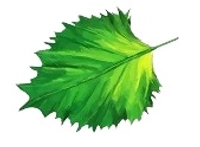Enhance your indoor environment with the beautiful Sansevieria Golden Hahnii, also known as the Dwarf Snake Plant. This compact and stylish indoor plant, native to West Africa, is beloved for its striking yellow-edged leaves that form elegant rosettes. The Golden Hahnii is a perfect addition to any home or office, providing both aesthetic appeal and practical benefits with minimal maintenance.
Indoor Benefits
- Air Purification: Sansevieria Golden Hahnii is an excellent air purifier. It absorbs toxins such as formaldehyde, xylene, and toluene, improving the overall air quality in your home or office.
- Aesthetic Appeal: With its vibrant green leaves edged in golden yellow, the Golden Hahnii adds a touch of elegance and modern style to any indoor space. Its compact size makes it perfect for desks, shelves, and tabletops.
- Low Maintenance: This plant is incredibly easy to care for, making it ideal for busy individuals or those new to indoor gardening. It can thrive in various light conditions and requires minimal watering.
- Stress Reduction: Indoor plants like Sansevieria Golden Hahnii can help reduce stress and create a calming environment, enhancing your overall well-being.
Plant Care Instructions
- Light: Place your Sansevieria Golden Hahnii in bright, indirect sunlight for optimal growth. It can also tolerate low light conditions, making it versatile for different indoor locations.
- Watering: Allow the soil to dry out between waterings. Water sparingly, especially during winter. Overwatering can lead to root rot.
- Soil: Use a well-draining potting mix. A cactus or succulent mix is ideal to prevent excess moisture retention.
- Temperature: This plant prefers temperatures between 60-85°F (15-29°C). Avoid placing it near cold drafts or direct heat sources.
- Humidity: Sansevieria Golden Hahnii can tolerate low humidity levels but thrives in moderate humidity. No special humidity adjustments are necessary.
- Fertilizing: Feed the plant with a balanced liquid fertilizer diluted to half-strength every 4-6 weeks during the growing season (spring and summer). Reduce feeding in fall and winter.
Common Problems and Solutions
- Yellowing Leaves: Overwatering is the most common cause of yellowing leaves. Ensure the soil is well-drained and allow it to dry out between waterings.
- Root Rot: This is caused by excessive watering. Use a well-draining soil mix and ensure the pot has drainage holes.
- Pests: Mealybugs and spider mites can occasionally infest the plant. Treat with insecticidal soap or neem oil and wipe the leaves with a damp cloth.
- Slow Growth: Insufficient light can slow down growth. Move the plant to a brighter location to encourage healthy growth.
Please Note: Images are for reference purposes only. Actual product may vary in shape or appearance based on climate, age, height, etc. The product is replaceable but not returnable.
